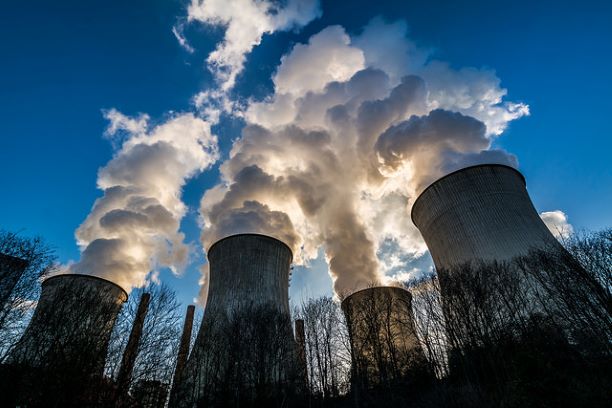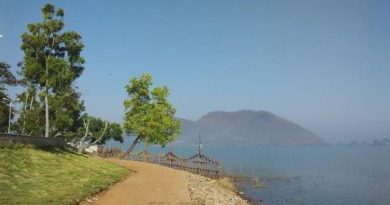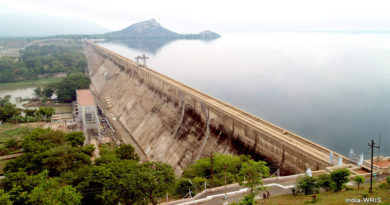Sonbhadra’s Day Of Reckoning Between “Energy Capital of India” or Switzerland of India

Few places have borne the curse of being resource rich as Sonbhadra, in Uttar Pradesh. Blessed with natural reserves of bauxite, limestone, coal etc, Sonbhadra’s (population 1.9 million ) backwardness and many rivers flowing through the district made it a natural fit for establishing large thermal power plants in the district. With a collective capacity of close to 12,000 MW of power plants, owned by NTPC, UPSEB, LANCO Power and other private sector firms, this district lying between the Vindhya and Kaimur hills, could have had a very different history today. It also has three cement factories, one of the biggest aluminium plants, a chemical factory, besies plans to build another 8000 MW of new power plants on greenfield/ existing sites. The NTPC owned Vindhyachal Thermal Power Station in Singrauli accounts for 4,760 MW, and is the largest thermal plant in India. With its first unit commissioned in 1987.
Its topology and natural environment is supposed to have led the first Prime minister of India, Pt. Jawarharlal Nehru to refer to Sonbhadra as The Switzerland of India. That compliment is a cruel memory for its residents today, racked as it is by the immense environmental damage these old thermal plants have caused in the region. Air, land, water, overall degradation, you name it, the district has seen the worst of everything. In fact, so horrific is the environment damage that there might be a case to have a separate bench at the NGT for all Sonbhadra related environmental cases.
Detailed studies had placed Delhi-NCR, Sonbhadra in Uttar Pradesh and Singrauli in Madhya Pradesh and Talcher-Angul in Odisha as major air pollution hotspots in India. Sonbhadra and Singrauli are considered as part of a single hotspot.
It’s eight small rivers, which have proved so useful for the water requirements of the thermal plants are all polluted massively today, unfit even for use by farmers in the region. Away from the big city, the district has found its pleas for relief ignored for too long, even as the health of residents, overall backwardness, and almost all key indicators placed it squarely in the ‘sick’ category, on all development indicators that matter.
The good news? There finally might be a chance to do the right thing for once. Some of the biggest polluters, notably the state owned power plants, are well past their due by date now. Taking the standard life cycle of 25 years for plants today, the Obra Thermal Power Station (UPSEB, 1971, 2000 MW), Anpara Thermal Power Plant (UPSEB, 1971, 2000 MW) , Singrauli Thermal Plant (NTPC, 1984, 2000 MW) , Rihand Thermal Plant (NTPC, 1989, 2000MW) should all be facing a shut down. All these plants, including the Vindhyachal plant in neighbouring Singrauli district need to be given a clear route to shutdown. There is no other right option here. Not only have these plants been putting off installation of pollution control equipment for one reason or the other, the cost of the environmental damage they have done, besides the incalculable loss of quality of life in the district, makes their continued existence an insult to the people of the district. Especially when the country can actually bear the loss of generation from these pants comfortably. By developed country standards, these plants and the damage they have caused to he region comfortably slots into the ‘criminal acts’ category, in fact.
The Rihand reservoir, where one of the largest floating solar plants has been planned, has itself borne the brunt of the pollution too, with mass fish and other wildlife die offs caused by the mercury poisoning due to dumping of fly ash , as well as other chemical factories in the region.
However, even before these plants are gone, plans are already afoot to replace them with new power plants. Incredibly, 30 years after it was first identified as a critically polluted area , almost nothing has been done, and more thermal power plants are being planned in the area. While these newer plants might be less polluting, we still believe that the Uttar Pradesh government will do well to completely reevaluate the need for any incremental thermal addition or replacement , and consider the full potential of renewable energy generation in the state. Both utility and rooftop generation progress in the state has been tardy, and given the right attention , a large part of the lost generation from these thermal plants could be replaced with clean energy in very good time. Considering how the country is power surplus currently, and in fact has massive idle capacity with both coal and gas plants elsewhere, there was never a stringer case to focus on Sonbhadra’s natural beauty , rather than its natural resources. The former offers far greater potential for jobs creation, development and an atonement for the let down for the people in the district.
UP Chief Minister Yogi Adityanath is reported to have asked for ensuring that the district becomes a ‘developed’ district by 2020 end. And the development of it as a tourist hub. It’s a great signal of intent, but can he take the necessary action to ensure it happens ? Sonbhadra’s future depends on it.




